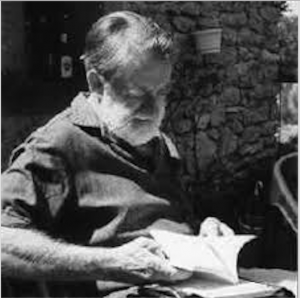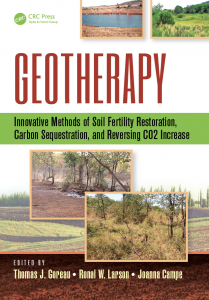Review of Geotherapy Preface: Profiles of Richard Grantham
This is a review of the preface from our book Geotherapy: Innovative Methods of Soil Fertility Restoration, Carbon Sequestration, and Reversing CO2 Increase. Available from CRC Press and Amazon.
This is part of an ongoing series of reviews, beginning with the preface and followed by chapter reviews in the weeks to come.
The book Geotherapy: Innovative Methods of Soil Fertility Restoration, Carbon Sequestration, and Reversing CO2 Increase is primarily about the science of geotherapy and its application. It presents the theories behind soil remineralization, biochar, and agroecology, among other concepts. It presents the evidence supporting those theories. It presents the results of applying these techniques in the field. Along with the science, it is important to remember why remineralization matters. It is important to remember that scientific rigor can go hand in hand with passion and a personal conviction to serve future generations. It is important to remember that values play a crucial role in deciding what to do with the lessons we learn from science. Science is a tool, and it can be used wisely or with hubris, and humanity must make choices carefully.
To illustrate the passions and values involved, and to keep the science of Geotherapy in context, the book begins with two profiles of Richard Grantham, known as “the father of geotherapy.” These personal accounts of the private journey that led to the development of geotherapy remind us of what is at stake and why we should care.
As the authors (Tim Greenland and Thomas J. Goreau) relate, Grantham was a man of many achievements. He served as a bomber pilot in World War II. After the war, he studied evolutionary biology, and went on to become an expert in molecular biology and genetics. He made significant contributions to our understanding of evolution on a molecular level. Later in his career, he turned his focus to the health of the planet Earth.
The prefaces to Geotherapy relate that accounts of environmental degradation, such as Rachel Carson’s The Silent Spring, deeply affected Grantham, convincing him that we needed to focus on the environment. He began to think about the damage that had already been done to the planet, and how we had a duty to act. He began to think of the Earth as a patient in need of therapy to address the problems that already existed. The patient/therapy metaphor helped to contextualize scientific research on climate and show how to turn it into a movement.
The simple, natural solutions to the environmental issues that we face come from a deeper ecological perspective through which we study and attune to the Earth’s living natural cycles and ecosystems. It starts from a deep commitment to the values of serving future generations and all life on Earth, and recognizes that effective methods are necessary. What kept the ecosystem stable before human intervention? How can we restore the balance? What are the risks? What works? From this starting point, researchers have data, techniques, and products to address these important questions.
Since the early days, geotherapy has grown from a personal method of conceptualizing the climate crisis, toward a scientifically robust, effective movement. The fact that geotherapy grew out of genuine concern and passion, combined with hard science and pragmatism, makes it exciting.
The introductory profiles of Richard Grantham are not only a moving tribute, they effectively set the stage for what comes in the rest of the book.
Benjamin T. Rancourt received his PhD in Philosophy from the University of Massachusetts Amherst in May 2016. His continuing philosophical research focuses on understanding, knowledge, and science, among other topics. This research ties into his wider goal of encouraging deeper understanding of ourselves, our strengths, and our limitations. He hopes that greater understanding will help us use the resources available to us to preserve what is good and address what is wrong. Walking is his primary mode of transportation. He appreciates the natural world. He lives in Northampton, Massachusetts with his wife Julia.
Support us on Patreon
Thank you for joining us today! Please become a member of RTE and support us on Patreon. Unlike many larger organizations, we work with a team of determined and passionate volunteers to get our message out. We aim to continue to increase the awareness of remineralization to initiate projects across the globe that remineralize soils, grow nutrient dense food, regenerate our forests’ and stabilize the climate – with your help! If you can, please support us on a monthly basis from just $2, rest assured that you are making a big impact every single month in support of our mission. Thank you!









Stephanie Rancourt
August 24, 2016 (4:05 pm)
An informative article introducing a compelling book on geotherapy and remineralization. Striving to aquire knowledge of the Earth’s problems is needed to keep improving and/or correcting them.